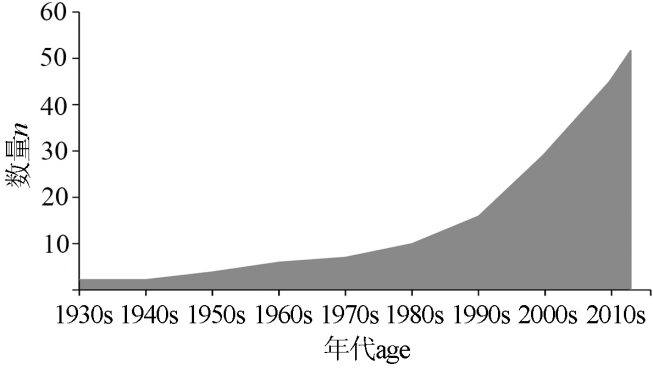

Thinking on authoring the excavation report of Paleolithic sites
Received date: 2022-12-12
Revised date: 2023-03-15
Online published: 2023-10-16
Excavation reports are vital for the publication of original archaeological data. Comprehensive research on a site is often a time-consuming task, therefore timely publication of excavation reports becomes a priority to disseminate information about a site effectively. At present, there are relatively few reports on Paleolithic sites published as full monographs. And with increasing of diversity of researchers and their training, stylistic rules and contents of excavation reports on Paleolithic sites vary in terms of original information, which is not conducive to effective scholarly communication. This paper discusses a basic framework for preparing Paleolithic archaeological reports from the perspective of site and human behavioral research. This paper holds that the excavation report should publish basic information “from the surface to the inside” including at the minimum, geographical location; discovery, excavation and research history; geology; topographical land forms; excavation methods and procedures; site stratigraphy; age and paleoenvironment; excavated remains(including features and artifacts). Interpretation of human behavior should be added as a relatively independent part of the excavation report or should be published separately. An excavation report is foundation of archaeological research, but we are well aware that the report is not the ultimate goal in the science of archaeology. Researchers should expand the range and depth of their work and and focus on reporting original data. We hope that this paper promotes scholars to think more about the value of Paleolithic archaeological excavation report writing and its relationship to comprehensive research of a particular site and its environs, so as to achieve more timely and effective dissemination of Paleolithic information.

Key words: Archaeology; Paleolithic sites; Excavation report
Feng LI , Lijun JIANG . Thinking on authoring the excavation report of Paleolithic sites[J]. Acta Anthropologica Sinica, 2023 , 42(05) : 701 -708 . DOI: 10.16359/j.1000-3193/AAS.2023.0022
| [1] | 高星, 许渤松. 中国考古百年, 须从桑志华写起[N]. 中国文物报, 2020-07-10(005) |
| [2] | 丁馨, 杜雨薇, 徐欣, 等. 中国早期人类分布的环境制约因素探讨[J]. 第四纪研究, 2021, 41(5): 1342-1356 |
| [3] | 葛俊逸, 邓成龙, 邵庆丰, 等. 中国古人类遗址年代学的研究进展与问题[J]. 人类学学报, 2021, 40(3): 393-410 |
| [4] | 张忠培. 关于中国文明起源与形成研究的几个问题——在《中原文物》百期纪念暨中原文明学术研讨会上的讲话[J]. 中原文物, 2002, 5: 12-23 |
| [5] | 曹兵武. 考古报告三题[J]. 江汉考古, 2002, 2: 85-87 |
| [6] | 严文明. 关于编写考古报告的谈话[A]. 见:严文明.走向21世纪的考古学[C]. 西安: 三秦出版社, 1997, 175-184 |
| [7] | 张忠培. 漫议考古报告[N]. 中国文物报, 2001-09-02(007) |
| [8] | 国家文物局. 田野考古工作规程[M]. 北京: 文物出版社, 2009 |
| [9] | 雷兴山, 王洋. 田野发掘报告的编写理念与方法[A]. 见:王巍,余西云(主编).中国考古学理论与方法I[C]. 北京: 科学出版社, 2020, 135-141 |
| [10] | 赵辉, 张海, 秦岭. 田野考古学[M]. 北京: 北京大学出版社, 2022 |
| [11] | 裴文中. 周口店山顶洞之文化[A]. 见:裴文中.裴文中科学论文集[C]. 北京: 科学出版社, 1990, 115-138 |
| [12] | 裴文中, 吴汝康, 贾兰坡, 等. 山西襄汾县丁村旧石器时代遗址发掘报告[M]. 北京: 科学出版社, 1958 |
| [13] | 高星. 中国旧石器时代考古学的昨天、今天与明天(代前言)[A]. 高星,侯亚梅(主编).中国科学院古脊椎动物与古人类研究所20世纪旧石器时代考古学研究[C]. 北京: 文物出版社, 2002 |
| [14] | 裴文中, 张森水. 中国猿人石器研究[M]. 北京: 科学出版社, 1985 |
| [15] | 李炎贤, 文本享. 观音洞:贵州黔西旧石器时代初期文化遗址[M]. 北京: 文物出版社, 1986 |
| [16] | 高星. 拼合的石器——高星考古论文选集[M]. 北京: 科学出版社, 2020, 550 |
| [17] | 李锋, 陈福友, 王山, 等. 甘肃徐家城旧石器时代遗址2009年发掘与研究[M]. 北京: 科学出版社, 2020 |
| [18] | 李锋, 陈福友, 赵海龙, 等. 试论“水平层”与旧石器时代遗址考古发掘方法[J]. 考古, 2019, 1: 85-95 |
| [19] | Ignacio de la TORRE, Rafael MORA, 裴树文, 马东东. 旧石器时代早期石制品分析方案[J]. 人类学学报, 2021, 40(4): 547-567 |
| [20] | 李锋, 邢路达, 陈福友, 等. 欧洲旧石器时代晚期石器类型学评介及类型学相关问题探讨[J]. 人类学学报, 2018, 37(4): 613-630 |
| [21] | 卫奇. 石制品观察格式探讨[A]. 见:邓涛,王原(主编).第八届中国古脊椎动物学学术年会论文集[C]. 北京: 海洋出版社, 2001 |
| [22] | 张森水. 北京志·周口店遗址志[M]. 北京: 北京出版社, 2004 |
/
| 〈 |
|
〉 |